|
All these decades later, it’s hard to remember exactly when I first fell in love with the thrill of being given a good scare by a movie. I have a distinct memory of being frightened silly after convincing the babysitter to let me stay up and watch Karl Freund’s Universal production of The Mummy, and later spending an evening with my grandmother and getting serious chills from an almost wordless TV production of Frankenstein. Any American science fiction film with a desert town setting was guaranteed to have me on edge, but one film I recall really loving because of how terrified I was when I first saw it as a kid was the 1939 The Cat and the Canary, starring Bob Hope and Paulette Godard.
In retrospect, this may seem a little surprising, as not only is this not a horror movie in the purest sense but a comedy-thriller that initially plays like a tale of the supernatural. It’s also one that includes just about every cliché in the haunted house movie book. But here’s the thing. I was probably about ten years old when I first saw the film, and for me, every one of what we know regard as clichés or tropes was new and terrifying, and when the comic moments came, they functioned purely as breathers between the scenes that had me hiding behind the sofa. Everything about the film scared me back then. A Louisiana swamp location in the midst of alligator-infested waters? No thanks. A portrait on the wall whose painted eyes are suddenly replaced by those of some unspecified human? Get the hell out of here. Secret panels that lead into dark corridors into which our lead characters nervously venture? Not bloody likely. But as soon as the film had finished, I wanted to see it again. Oh yes, I’d discovered the joy of being safely scared alright .
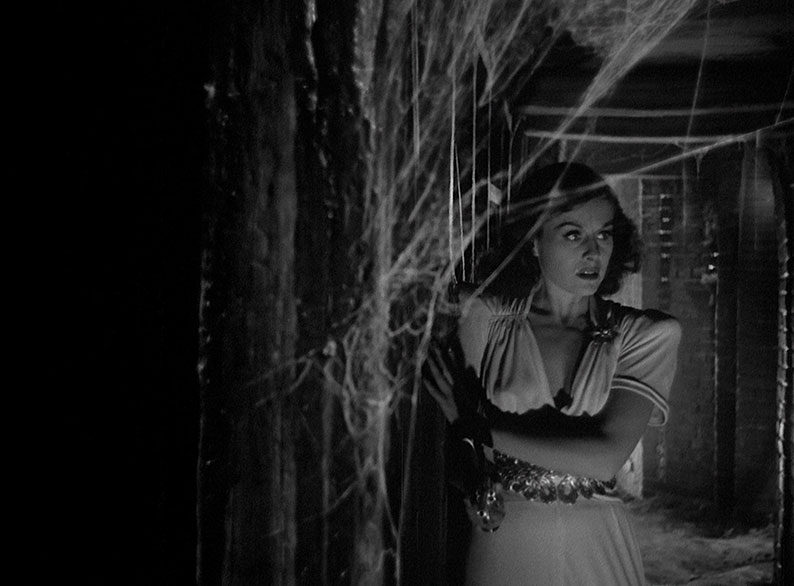
Although an early entry into the Old Dark House subgenre, the 1939 The Cat and the Canary is actually the second remake of a highly respected 1927 silent film directed by Paul Leni, which was adapted from a stage play by John Willard, and first remade in 1930 as The Cat Creeps under the direction of Rupert Julian and John Willard. The 1939 version was such a success that Paramount commissioned a follow-up the following year in the shape of The Ghost Breakers, in which Bob Hope and Paulette Godard again star but as different characters in an unrelated story. Once again it was based on a play – The Ghost Breaker by Paul Dickey and Charles W. Goddard – which had twice been turned into a film in the silent era, first in 1914 (by none other than Cecil B. DeMille) and then again in 1922. When I last checked, both versions are considered lost films.
If you’re in a hurry, I’ll save you some reading and state up front that I still think both films are gems of the genre, the difference being that while I still think The Ghost Breakers is terrific (with one small caveat), for me The Cat and the Canary is as close to perfect as a horror-comedy can get. Why? Oh, I’m so glad you asked…
| THE CAT AND THE CANARY (1939) |
|
Ten years after the death of reclusive millionaire Cyrus Norman, his solicitor Mr. Crosby (George Zucco) travels to his isolated home in the Louisiana swamplands to carry out Cyrus’s instructions and read his will to his surviving relatives. On arriving, Crosby is met by Cyrus’s still-loyal housekeeper, Miss Lu (Gale Sondergaard), who rebuffs his assertion that she must be lonely in the house by claiming that she has friends “from the other world” who speak to her regularly. When Crosby opens the safe in which the will has been stored for the past ten years, he is concerned that the envelopes contained within appear have been tampered with, indicating that someone else has had access to the will. Any attempt to change it would have been in vain, however, as the wily Crosby had a copy made and stored in a safe place elsewhere.
The first group of relatives to arrive consists of fussily judgemental Aunt Susan (Elizabeth Patterson), her nervous young companion Cicily (Nydia Westman), and cheerless Fred Blythe (John Beal), the only member of the trio that Miss Lu doesn’t instantly recognise. They’re quickly followed by cheerful Charlie Wilder (Douglass Montgomery), whose good looks Cicily is wowed by but whom Fred clearly has a serious grudge against. Bouncing in next with his customary cheer is famous radio actor Wally Campbell (Bob Hope), another family member Fred appears to have little time for. Last to arrive is celebrated illustrator Joyce Norman (Paulette Godard), whose youth and beauty makes her the centre of attention for all three of her male relatives.
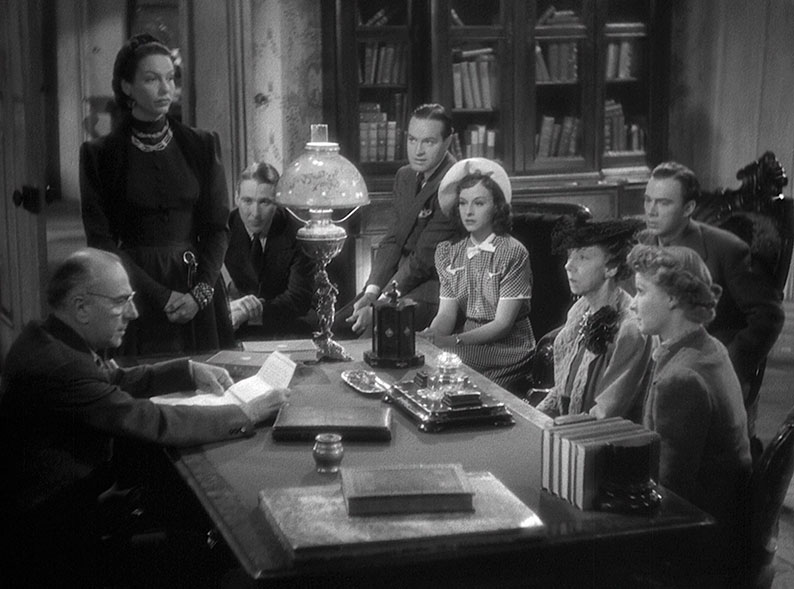
When the time comes to read the will, it turns out that Cyrus was concerned about a steak of insanity in the family, and in a move that seems to be inviting the foulest of play, he instructed that should his heir be shown to be of unsound mind or die within a month of the will reading, the inheritance should pass to the person named in a second envelope. He then stipulates that the entire estate should be shared equally between all surviving relatives with the surname of Norman, which makes Joyce the sole heir. The others all seem genuine in their congratulations, but with no available transport out of the bayou available until morning, a rocky night ahead in the house awaits them. When a mysterious gong chimes, Miss Lu claims that this is the spirits warning that one of them will die before morning, and dinner is disrupted by gunshots outside, fired by a guard from the nearby Fairview insane asylum, who informs them that a murderous maniac has escaped and is on the loose somewhere in the bayou. Then, when Joyce has her back to Crosby in the library, a secret door behind the bookcase silently opens and Crosby is dragged inside. When the shaken Joyce tells the others that Crosby has disappeared into thin air, the first questions start being asked about her mental stability.
Although it has its share of precedents, The Cat and the Canary is a near-perfect archetype of the Old Dark House comedy-thriller. Just about all of the key elements of the subgenre are incorporated here, each of which are executed with real panache. I’m sure my childhood fear of the notion of secret passages began with this movie, panels that open in unexpected places leading to dark narrow corridors with uncertain destinations, in which hide shadow-shrouded figures that you just know are planning to slaughter anyone foolhardy enough to enter. And when a panel open up above the headboard on Joyce’s bed and a dark hand slides out towards I still recall almost running from the room in terror and checking the solidity of the wall behind my pillow each night.
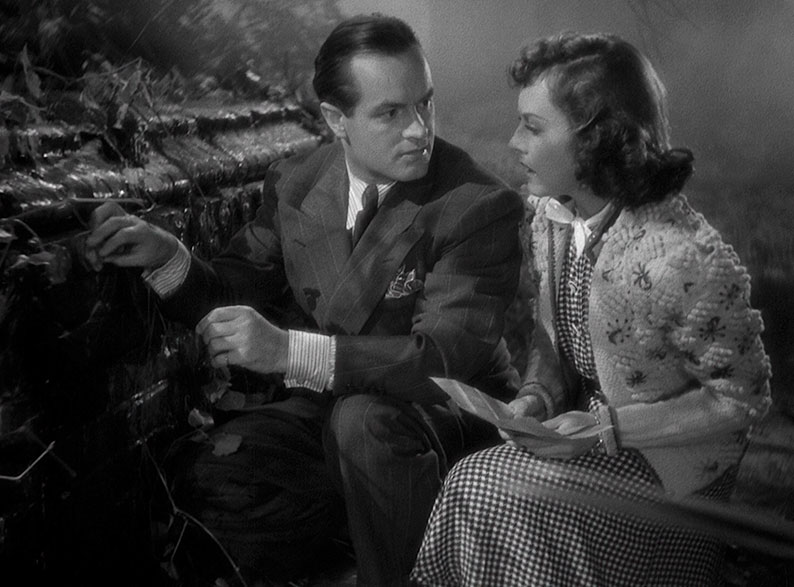
Initially, the scares are nicely tempered by quips, almost all of which are gifted to Hope, for whom the character of Wally Campbell was created in order to shape the film into a star vehicle for him. Whilst reshaping the material to fit the personality of its lead player can often backfire, here it proves a perfect fit for loveable coward persona that would become a Hope signature, with his comical responses often coming across as the sort of thing a quick-witted but nervous person might say in an effort to disguise the fact that he’s scared. Early on, this gives rise to one of moments that stayed with me from those childhood viewings, when the gong sounds seven times and Miss Lu portentously claims, “That’s the warning. It came just before the master died,” Wally jumps to his feet and prattles out nervously with an unconvincing smile, “Uh, you know, I’ve been thinking. There’s no use my staying here. After all, I’ve never inherited anything, except hay fever.” Joyce is quick to pull him back down into his chair, but when Miss Lu adds, “They are the spirits. They mean seven may live. There are eight people in this room. One will die before morning,” he’s back on his feet in an instant and blurting out reasons why he needs to leave. Early on, this trepidation looks as though it will team him up with the equally nervous Cicily, as the two make their way apprehensively down into a darkened cellar to lock the doors and windows, each trying to outdo the other in their reluctance to proceed, unaware that there is an unidentified figure skulking in the shadows. They actually make for an engaging pairing, but the star billing and the fact that Joyce seems delighted to see Wally again after all these years sets their eventual romance in stone. Predictable this may be, but once again Hope’s engaging screen persona lends this an unexpectedly touching air of realism, as he reacts with a teenager’s delight to every small show of affection that he gets from Joyce, and unquestionably takes her side whenever her claims are called into question by the others. Their relationship thus evolves in a convincing manner, with Joyce trusting Wally alone to show a letter handed to her by Miss Lu, and the two working as partners to uncover the secret location of a valuable necklace.
Occasionally, Wally’s loyalty to Joyce seems to almost involve an awareness of the subgenre in which their story is unfolding. When she is frightened by the hand that snakes out of the wall at the head of her bed for example, the others are quick to dismiss her story as the sign that she is losing her mind. Only Wally believes her and counters the scepticism of his companions with a resolute, “Haven’t you clucks ever heard of secret passageways and panels?” before quickly locating the opening in question and triggering an altogether more worrying reveal. As is noted in the special features, there’s a Scooby Doo element to the story progression, with the seemingly supernatural scares gradually revealed to have potentially even more dangerous real-world explanations, yet the sense that something unearthly is somehow behind it all pervades until the very end. And so deftly is the comedy entwined with the scares that I remember being a few viewings in before I noticed that it takes a back seat for the film’s tense final third.
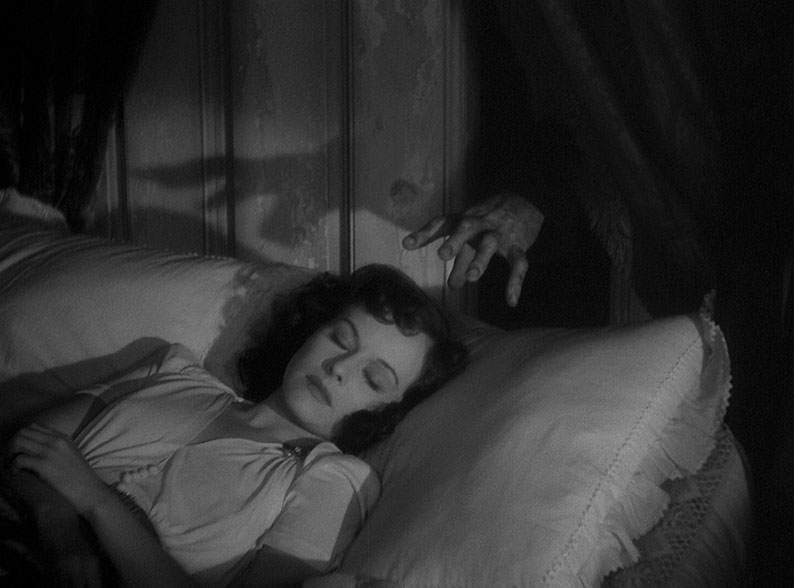
It's quite possible that nostalgia is colouring my view here, but revisiting The Cat and the Canary after a break of many years proved revelatory for the simple reason that it was every bit as delightful as I remember. It’s one of those rare films that for me gets everything right, one that perfectly balances the comedy and tension, misdirects us with a string of effective red herrings, quickly and effectively defines its characters, and crams an impressive amount of plot into a tightly structured 72 minutes. The performances are delight, and the comedy itself is nicely varied, from the sly dig at the zombie-like nature of Republicans (a gag that would be recycled in The Ghost Breakers to have a similar pop at the Democrats) to the native guide who responds to Larry’s attempt at a joke with, “Hmm. Heard it last year, Jack Benny program.” And yet, for some reason the line that always makes me laugh out loud doesn’t come from Larry but the sternly uncomical Miss Lu, when she responds to a point made by Crosby with terse and snake-like elongated, “Yessssss.”
| THE GHOST BREAKERS (1940) |
|
Although not a sequel, The Ghost Breakers is a spiritual (ha ha) follow-up to The Cat and the Canary, a spooky mystery story with the same two stars, again adapted by Walter DeLeon from an earlier stage play. Also back from the first film are producer Arthur Hornblow Jr., cinematographer Charles Lang, art directors by Hans Dreier and Robert Usher, composer Ernst Toch, and famed costume designer Edith Head. Here, though, George Marshall is in the director’s chair, and this time you have to wait a surprisingly long time for the film to make good on the promise of its title.
It begins in the middle of a raging thunderstorm, which has knocked out the power in a hotel suite occupied by Mary Carter (Paulette Godard). Visiting her is Mr. Havez (Pedro De Cordoba) of the Cuban Consulate, who suggests she get used to using candles, as there is no electricity on Cuba’s Black Island. This is the location of Castillo Maldito, which was built by Mary’s great-great-grandfather and is now her property, but Havez advises her not to go there. In the past 20 years, he portentously informs her, no-one who has spent the night there has lived to see morning, slyly suggesting that supernatural forces were responsible. Unfortunately, he's picked the wrong person to spook – Mary’s response to the thunderstorm is not to cower but proclaim “How exciting!” with the widest of smiles, and her cheer doesn’t falter one iota on hearing this warning. The primary reason for Havez’s visit is to witness the transfer of the castle deeds to Mary, which arrive a short while later in the briefcase of Mr. Parada (Paul Lukas), who reveals that someone whose identity he is not at liberty to reveal has offered $50,000 for the property, far more than it is theoretically worth. No sooner has the offer been made than the phone rings, and a man named Ramon Mederos (Anthony Quinn) warns Mary against selling the castle to Parada and advises her to be cautious in the man’s company.

Meanwhile across town, radio broadcaster Larry Lawrence (Bob Hope) is paid a visit by underworld informer Raspy Kelly (Tom Dugan), whom he pays for supplying him with some juicy gossip on local gangland kingpin Frenchy Duval (Paul Fix) for his radio show that evening. When the broadcast goes out, however, Frenchy is not amused, and calls Larry to invite him to his hotel room so he can correct him on a couple of points. It’s a meeting Larry nervously agrees to keep, and after first rejecting the idea, he decides to accept the offer from his manservant Alex (Willie Best) of a gun for protection. Inside the hotel – which just happens to be the one in which Mary is getting ready to depart – Larry sees Ramon skulking in the shadows and is briefly mistaken for someone else by Havez, then is further rattled by the appearance of one of Frenchy’s goons. As he edges apprehensively down the corridor, Ramon arrives at Havez’s door and tries to shoot him, but Havez is faster and lands a fatal bullet into Ramon, the noise of which prompts the jumpy Larry to spin around and inadvertently fire his own gun in their direction. The bullet shatters a light fitting but otherwise does no damage, but when Larry sees Ramon fall to the ground, he believes that he was the one who shot him. As he desperately looks for a way out, Mary opens her door and Larry blags his way into her room, explaining his situation and begging for her help.
It's an intricately plotted setup whose whole purpose is to bring the two stars together and get them both on a boat to Havana and heading to the castle in which the promised ghosts will presumably appear and be broken. At this point, the film is not a supernatural mystery-thriller at all, but a comedy crime-thriller, with Hope and Best providing the laughs while the rest of the main characters play it straight. A couple of loose ends are left dangling, as once Larry believes he has killed a man, the potential threat posed by Frenchy and the consequences for the personal information broadcast about him cease to be of concern for either Larry or the film. The reason Larry ends Mary’s cabin, meanwhile, is not because he’s invited, but because he hides in her luggage trunk when the rather witless Lieutenant Murray (Robert Elliott) and a uniformed Sergeant (James Blaine) search Mary’s suite to make sure the murderer is not hiding within. This sizeable trunk is then transported out of the apartment by a porter while Detective Murray is present and with his full approval! I found myself wondering what his clearance rate was.
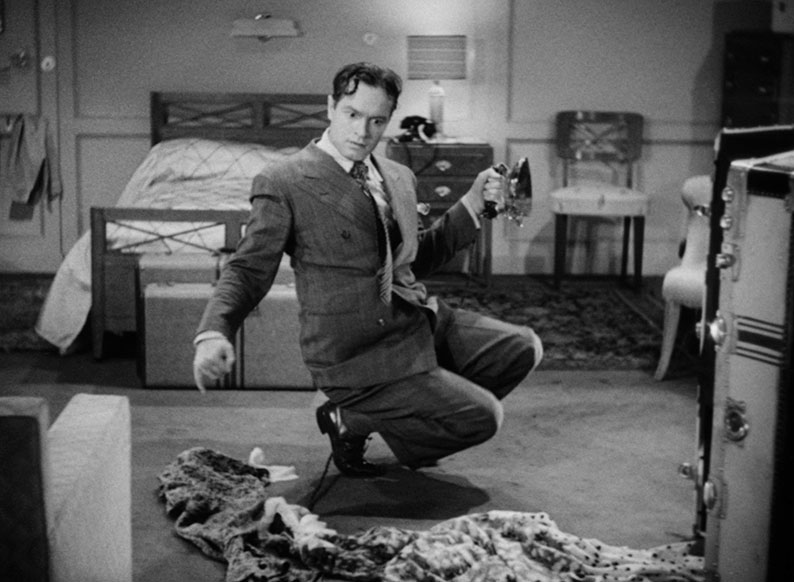
I have a feeling that it’s the long delay in getting to the creepy stuff that has kept me from having quite the same passion The Ghost Breakers over the years as I still have in spades for The Cat and the Canary, but it’s still an enormously entertaining film that I hold in almost as high regard. The two leads are once again a key draw here, Godard for the strength of character and refreshing self-confidence she displays as Mary, Hope as much for his self-effacing vulnerability as for his wit and comic timing, neither of which can be underestimated. There are some lovely Hope moments here, from the way he casually lets the hat he is holding slip just a little when he realises the voice on the of phone call belongs to Frenchy, to the gorgeous bit of physical comedy when he finally emerges from the trunk and is forced to walk like a monkey, unable as he is to straighten his severely constricted legs.
Almost matching Hope for comic timing is Willie Best, but herein lies the one element that has aged the film more obviously than its forebear. If The Ghost Breakers was made today with a white lead and a black supporting character, Alex would be Larry’s closest friend and be dragged into the adventure with a similar degree of reluctant loyalty – think Dulé Hill’s Gus to James Roday’s Shawn in the TV comedy detective series Psych. But this was Hollywood in the late 1930s, where the very idea of having a black character portrayed as the social equal of a white one was considered unthinkable, which is why the only half-decent parts for black actors were supporting roles as servants, butlers, shoe-shine boys and the like. Thus Best – whom Hope once described as the most talented actor he had worked with – has to play a manservant and intermittently suggest that Alex is a little slow-witted, then bulge his eyes and shake in abject terror for audience amusement when he gets scared. At one point Larry even calls him “Seabiscuit,” referencing a celebrated racehorse of the day that had a dark coat and a black mane. It’s all a sign of less enlightened times, but really is worth making allowances for to appreciate the very real chemistry between Best and Hope, which for much of the time belies the master/manservant relationship and has the two acting very much like the friends you suspect that they really are, riffing off each other to the point where it’s their scenes together that showcase both men at their best.
We’re almost two-thirds of the way in before Larry and Alex arrive at Black Island, but once they do, the tone instantly changes, matching the mood of The Cat and the Canary and actually topping it in a haunting shot of a zombie (Noble Johnson) lying in bed and turning to face the camera and the enquiring eyes of the two visitors. Seriously, for me, this one simple but superbly unsettling image is up there with the best of Val Lewton when it comes to giving me the shivers. Once Larry and Alex enter the castle, we’re also treated to some impressive optical effects work, as what may or may not be the spirit of a former occupant rises from an ornate chest and goes for a little walk before returning to its resting place. Some of the other scares have been reworked from those in The Cat and the Canary, and the biggest threat is a very physical one in the shape of the aforementioned zombie, but it turns out there is more to him than initially meets the eye. A towering and powerful creature that appears to be under the control by his mother (Virginia Brissac), he is at one point shown to have retained a semblance of his former humanity, which puts a very different and altogether sadder slant on that earlier slow turn to look at Larry and Alex from its bed.
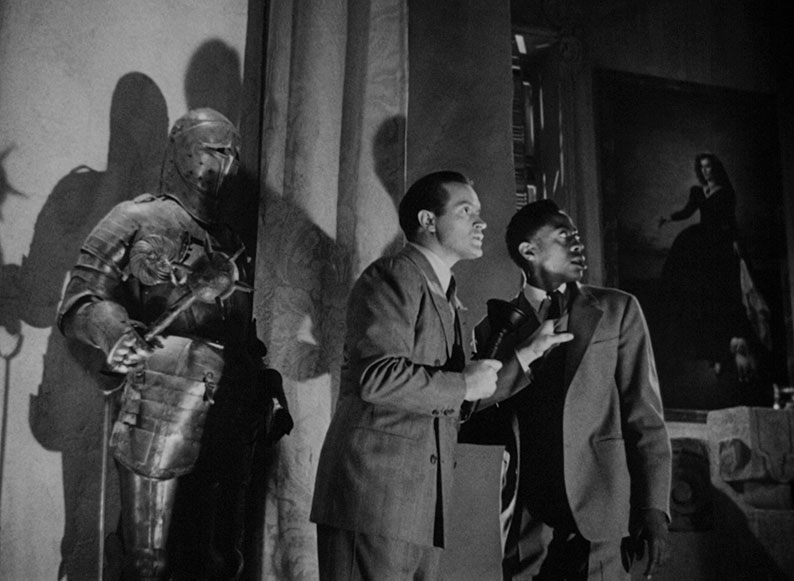
That the whole of the Black Island section of the film drips with atmosphere is down in no small part to Hans Dreier and Robert Usher’s superb art direction, Charles Lang’s atmospheric lighting camerawork, and George Marshall’s purposeful direction. The film takes its time getting to the creepy material, but the build-up itself is always engaging and often great fun. This is thanks in no small part to an enjoyably twisty screenplay, Hope’s on-screen chemistry Best with Godard, and a thoroughly solid supporting cast, which includes an early dual role for Anthony Quinn as the fated Ramon and his brother Francisco. For me, it doesn’t quite have the purity, tonal consistency and structural perfection of The Cat and the Canary, but it’s still a belting blend of horror, gangster movie, romantic drama and thriller, one whose influence on later work is matched by its value as a consummate entertainment.
Both films are presented here in 1080p transfers from scans of the original film elements by Universal, with The Ghost Breakers sourced from a new 2K master. Both are framed in their original aspect ratio of 1.37:1.
The Cat and the Canary looks particularly good for a film of its vintage, with a well-balanced contrast range and a clearly defined level of detail – the page of text shown from The Psychology of Fear is particularly crisp. Some small instances of minor wear still remain, and there is some very minor movement in frame on some shots, but they do not detract and are largely inconsequential. Film grain is visible but not aggressively so.
The Ghost Breakers is presented from a new 2K master, and with that in mind the real surprise is that the image is visibly softer than on The Cat and the Canary transfer, though not to the point where it becomes a distraction. Otherwise this is a solid remaster, with a pleasing contrast range and only minor traces of wear still visible. The film grain is slightly more noticeable here but feels right for the image.
Both films sport Linear PCM 2.0 mono soundtracks, and although the dynamic range is inevitably narrow, dialogue, effects and music are all clear. There is a minor bass hum in the background on the Cat and the Canary, something not present on The Ghost Breakers.
Optional English subtitles for the deaf and hearing impaired are available for both films.
THE CAT AND THE CANARY
Audio Commentary by Kevin Lyons and Jonathan Rigby
The always engaging Kevin Lyons and Jonathan Rigby (surely you all know who these two are by now?) take an enthusiastic dive into a film they describe at one point as “a perfect film,” and “one of the top three or four comedies of all time.” They supply information on the actors (including an interesting story about George Zucco), director Elliot Nugent, composer Ernst Toch, cinematographer Charles Lang, and screenwriters Walter DeLeon and Lynn Starling. They also note that some of the self-referential jokes are what we’d now call meta, and draw plenty of comparisons with Paul Leni’s 1927 film version and the original stage play by John Willard. They reveal that the film was regarded by the BBC more as comedy than horror, and thus screened the film at child-friendly times of day, which explains how I saw it at such a young age – they remark tellingly that some of us were probably scarred by what we saw.

Kim Newman Interview (20:47)
The venerable Kim Newman not only examines the two films included on this disc, but looks back on the development of the horror-comedy subgenre that they are part of, which he traces back to the book Seven Keys to Baldpate by Earl Derr Biggers, an early example of meta fiction that was adapted several times for both stage and screen. He talks about other films that were part of this cycle, before moving on to The Cat and the Canary and The Ghost Breakers, noting that they reinvigorated the genre, and commenting on the “mixed blessing” of Willie Best in the latter, who is funny in scenes that are not always comfortable to watch. He also suggests that these films and their brethren remain enormously watchable and rather comforting.
Trailer (3:40)
A long trailer that admits there are laughs but that still pushes the film primarily on its mystery-thriller content, and includes a spattering of spoilers.
THE GHOST BREAKERS
Audio Commentary by Kevin Lyons and Jonathan Rigby
Lyons and Rigby return to comment on a film that they appear to hold in even higher regard than The Cat and the Canary, a point on which I believe we can cordially differ. As a result, get ready for some serious gushing about almost every aspect of the production, but given that it’s always informed and often educational gushing, I have no problem with that. Areas discussed include the teaming of Bob Hope and Willie Best, the Scooby Doo template of both films, the film noir tone of the shipboard exterior scene, Hope’s too-rarely explored skill at physical comedy, the actors, the sound effects, the art direction, costume designer Edith Head, the film’s influence, and much more. We’re into the last act before the less comfortable aspects of Willie Best’s character are discussed, and they do note that he was “a brilliant actor boxed into Hollywood apportioned roles.”
Radio Adaptation (30:02)
Now this is interesting, a 1949 production of the Screen Directors’ Playhouse of The Ghost Breakers, starring Bob Hope as Larry and Shirley Mitchell as Mary, and introduced by the film version’s director, George Marshall. Where other radio adaptations of movies often compress the narratives of the films they are adapted from, this one completely rewrites the script of the original, packing it with gags to transform it into what almost plays like an episode of The Bob Hope Show for a most receptive live studio audience. Structural changes see Mary attempt to hire Larry as a ghost breaker, a job he only accepts after Frenchy kills Raspy and announces his intention to do likewise to Larry. The mobster even follows Larry to Cuba and is waiting for him at the castle when he and Mary arrive. Other characters from the film make brief appearances, but there’s no sign of Alex, and the mother of the zombie is played to the gallery here – for those of the right age, imagine the Soothsayer from Up Pompei! and you’ll get the idea. Almost every line Hope delivers is a gag, some of which reference popular culture of the day and will likely be lost on a modern audience (they were on me), and the meta aspect of the film is upped a notch here – “One more week on the air without a rest and I’d begin to look like Bob Hope,” says Larry at one point. A couple of times I found myself wishing there had been cameras in the studio, as the audience breaks up into peals of laughter at something that characters are clearly doing rather than saying.
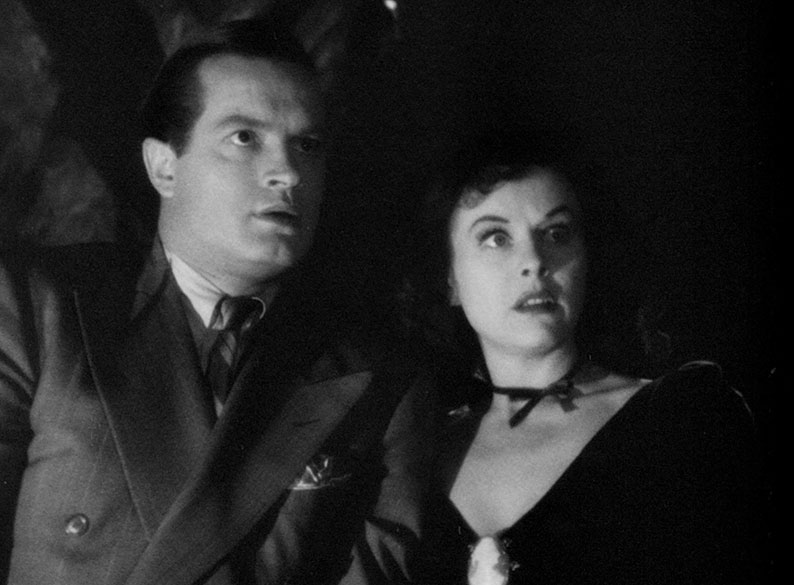
Trailer
The later Ghostbusters is foreshowed here in a to-camera introduction from Hope in which he is shown taking enquiries for Ghost Breakers Incorporated, his role in the company identified as Chief Exterminator. Extracts from the film follow, and the trailer concludes with the return of Hope and a gag spooky optical effect.
PLUS
Booklet
One of the slimmer Eureka booklets at just 20 pages and containing only the main credits for the two films and a single essay, but worry not, as it’s a damned good one. Written by film scholar, writer and researcher Craig Ian Martin, it takes a comprehensive look at the birth and development of the horror comedy in American cinema, and how it was shaped in part by the changing socio-political landscape. An excellent read.
I’m woefully late with this review for reasons I won’t even try to explain, but if you’ve not picked this disc up yet, then it gets my enthusiastic recommendation. Maybe one day materials will be found that allow for a crisper transfer of The Ghost Breakers, but what we have here will do fine for now, and you’re getting two of the very best supernaturally themed comedy-thrillers, both with excellent commentary tracks and supported by trailers, a Kim Newman interview, and a splendid booklet essay by Craig Ian Martin. An absolute must.
|